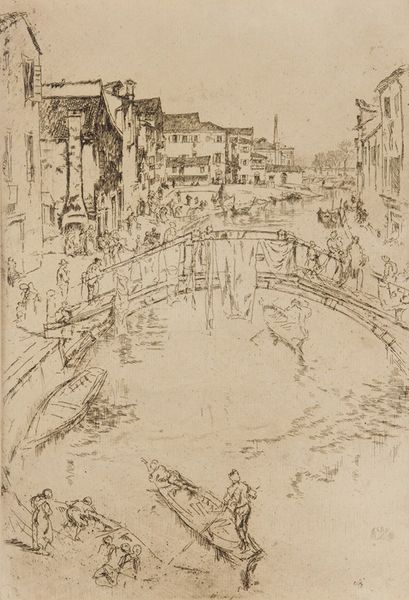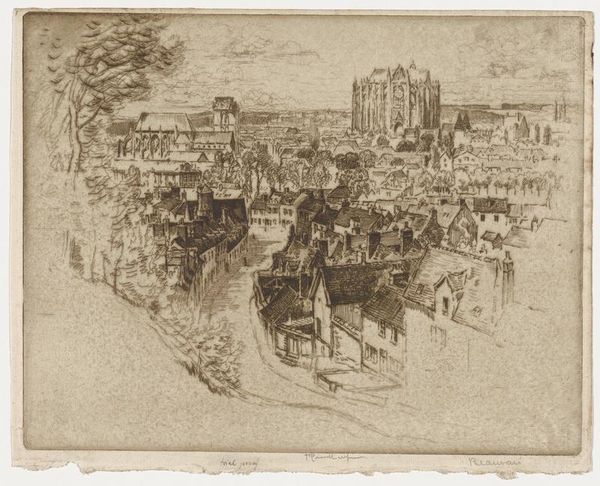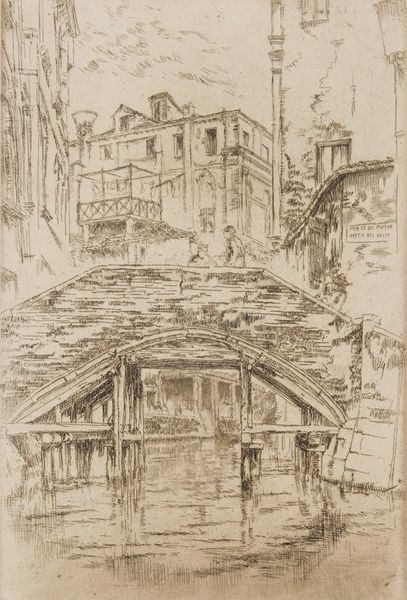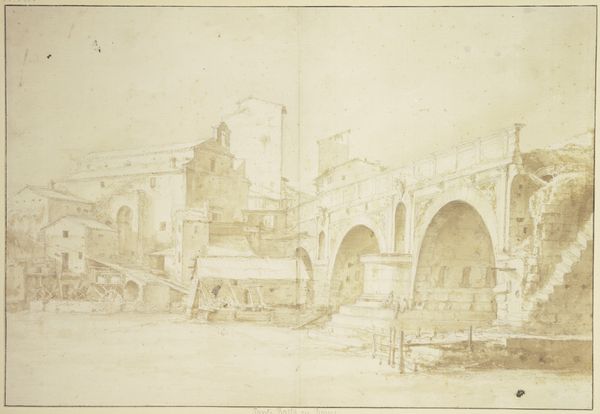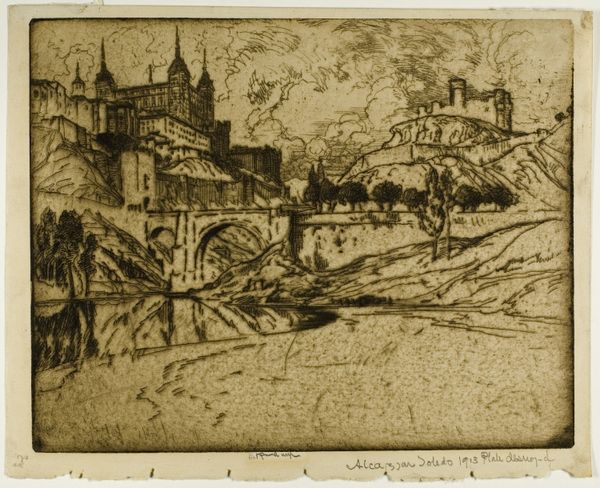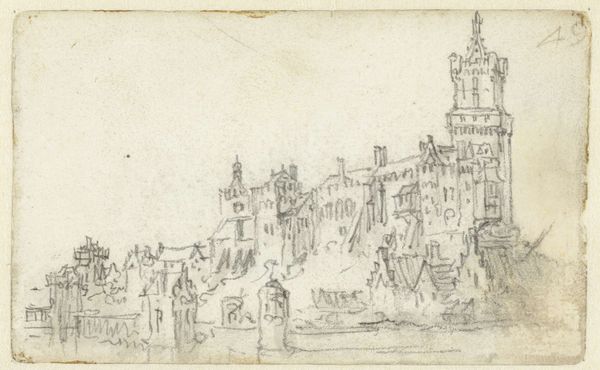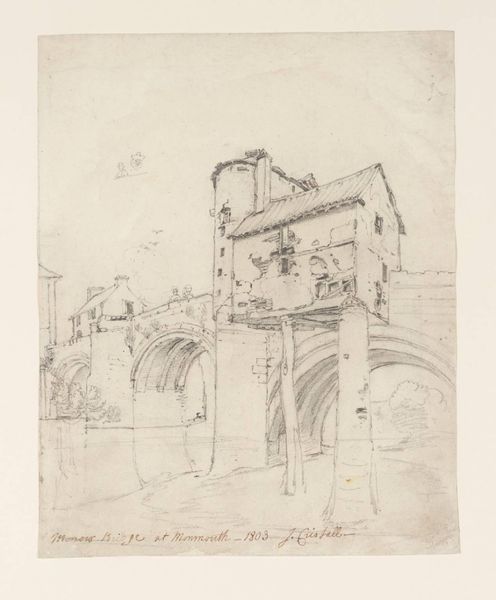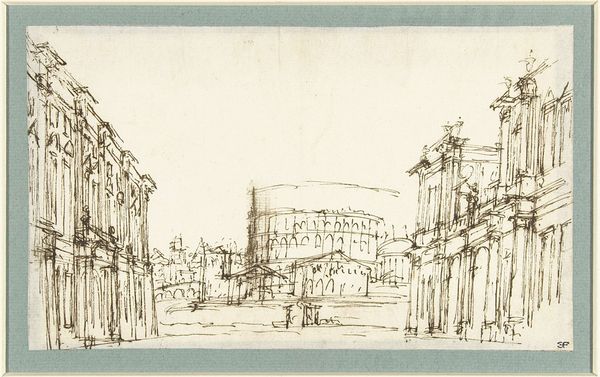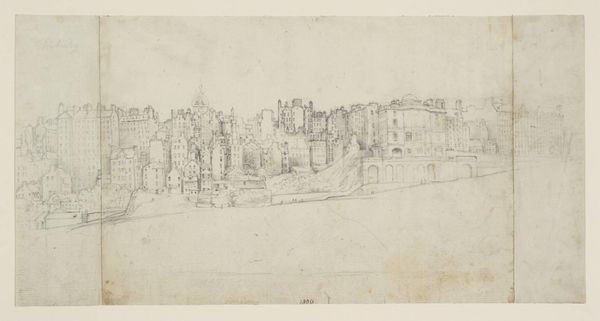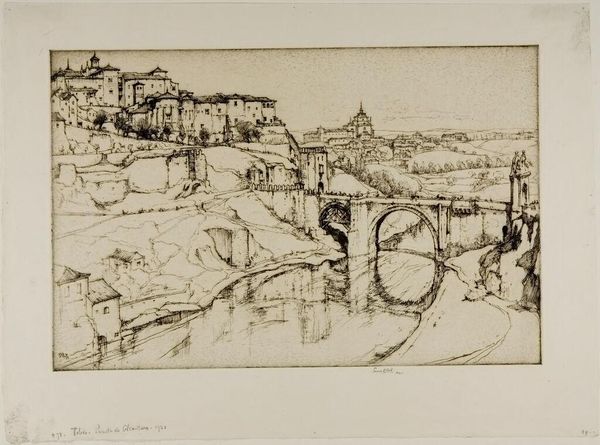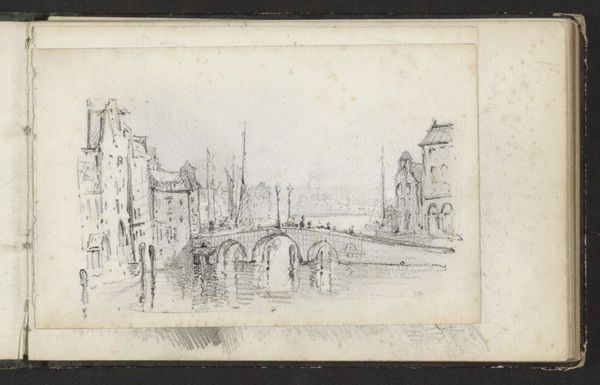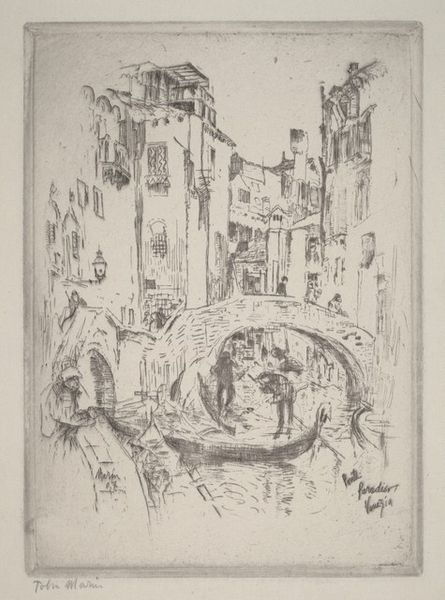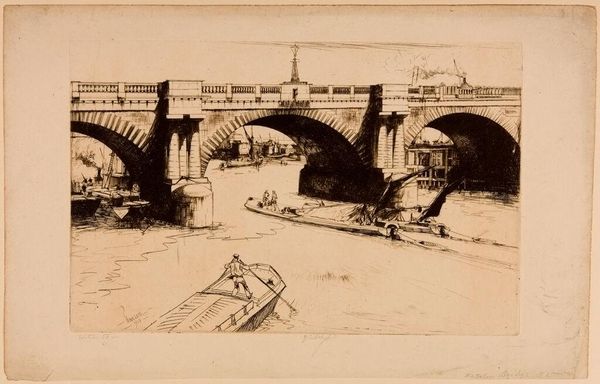
print, etching
# print
#
impressionism
#
etching
#
landscape
#
cityscape
#
realism
Dimensions: 8 1/8 x 10 1/2 in. (20.64 x 26.67 cm) (plate)9 1/4 x 11 13/16 in. (23.5 x 30 cm) (sheet)
Copyright: No Copyright - United States
Joseph Pennell created "The Rialto" using etching, a printmaking technique that uses acid to corrode the unprotected parts of a metal surface to create a design. The plate is covered with a waxy, acid-resistant ground. Then, the artist scratches the design into the ground with a pointed needle, exposing the metal. The plate is then immersed in acid, which eats away at the exposed lines, creating recessed lines in the plate. Pennell would then remove the ground and apply ink to the plate, wiping the surface clean but leaving ink in the etched lines. Finally, he would press the plate onto paper, transferring the ink and creating the print. The material processes involved in etching—the precise application of ground, the controlled corrosion by acid, and the delicate inking and printing—speak to the tradition of craft and the skilled labor involved in printmaking. Pennell’s choice of subject, a bustling urban scene, mirrors the industrialized world. By understanding the intricate processes and labor involved, we can fully appreciate the artwork’s significance, challenging the divide between fine art and craft.
Comments
No comments
Be the first to comment and join the conversation on the ultimate creative platform.
